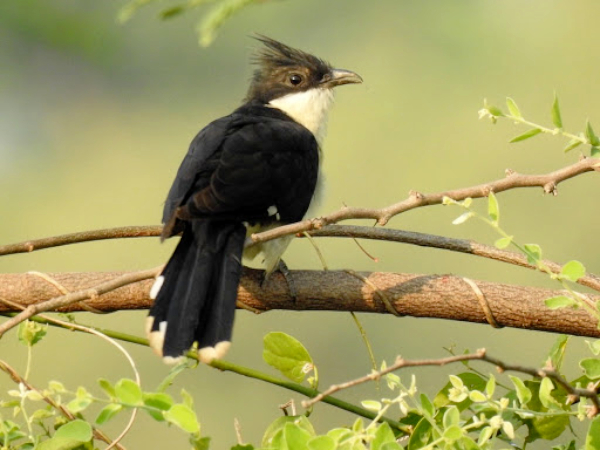Dehradun: Two years ago, scientists from the Wildlife Institute of India (WII) and the Indian Institute of Remote Sensing (IIRS) had an idea. The cuckoo has always been known as the rain bird, the harbinger of monsoon. But how has it come to be so? They finally hope to find out, in what will be the first attempt to track migratory patterns of a bird to understand its relationship with climate change.
On Sunday, a cuckoo arrived on the WII campus, believed to be from South Africa. On Tuesday, another was caught. The first, called Megh (cloud), has been tagged with a transmitter. The other, Chatak (as it is locally known), will be tagged on Wednesday. The transmitters had been imported from the US a year ago but no cuckoo could be caught and the study, consequently, could not be initiated.
“It is for the first time that a bird species is being tagged to understand its relationship with climate patterns,” said R Suresh Kumar, senior scientist at the Department of Endangered Species Management, WII. “There are two types of cuckoo — ones that are native to parts of southern India and another that travels all the way from South Africa to northern India. The transmitter will help us map the migration path. That will be studied along with the monsoon patterns along this path,” said Gautam Talukdar, a colleague of Kumar.
The arrival of the Jacobin Cuckoo, Pied Cuckoo or Chatak is considered auspicious by agriculturalists, who think it is a sign of good harvest. Local lore says the bird quenches its thirst only on raindrops, travelling with the monsoon clouds.
“We have online records from eminent birdwatchers across the country and data from the India Meteorological Department which shows the cuckoo arrives just before the monsoon in central and northern India. If the monsoon arrives earlier than usual, so does the cuckoo,” said Dr Dhananjai Mohan, director of WII, himself a noted birdwatcher.
And tied to this tiny bird is a poorly understood climatic phenomenon, the South Asian Monsoon. Climate scientists have observed it has been changing in terms of frequency, intensity and duration over the past few decades. Not much is known about the reasons though. “India is an agrarian community. Decoding the cuckoo’s relationship with the monsoon is important for climate change modelling,” said Sameer Saran, national coordinator of the Indian Bioresources Information Network and head of the department of geoinformatics at IIRS. The migration path will be observed real-time on a geospatial platform. The project has been funded by the department of biotechnology, government of India.
Source: ToI
Image Courtesy:Flicker
You may also like
-
New Heat-Based Approach To Cancer Treatment Can Reduce Chemotherapy Doses
-
Scientists Take A Major Step Towards Unification Of Classical & Quantum Gravity
-
India Graphene Engineering and Innovation Centre (IGEIC) Under the Vision of Viksit Bharat@2047 Launched
-
New High-Performance Gas Sensor can Monitor Low Level Nitrogen Oxides Pollution
-
Antidepressant Drug can be Repurposed for Treating Breast Cancer
